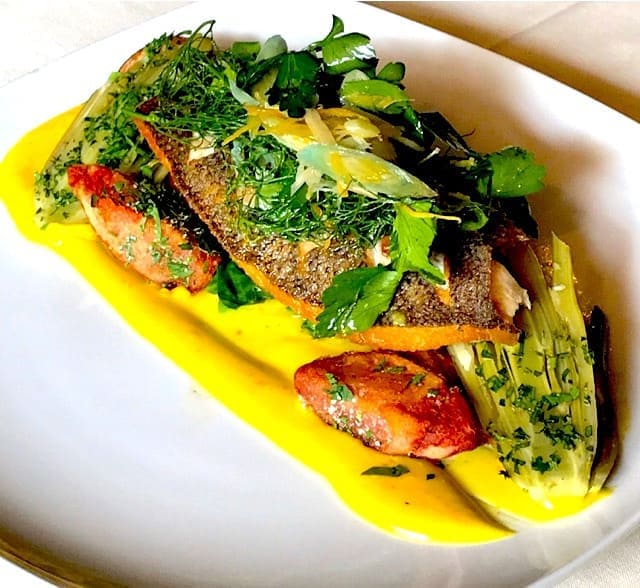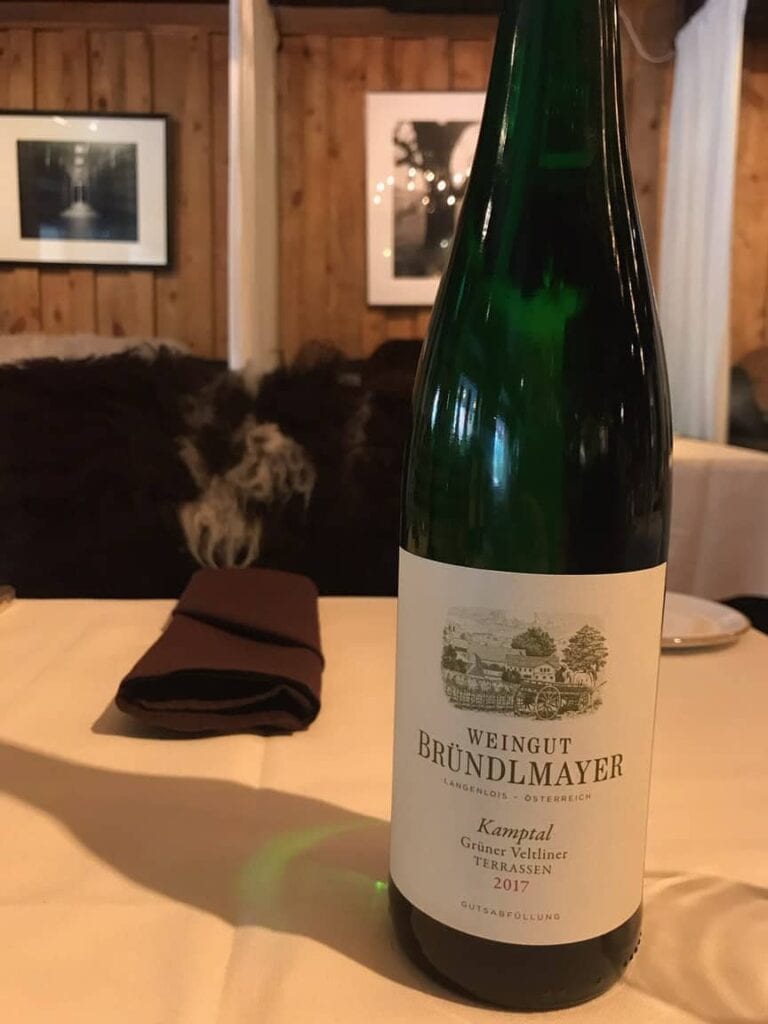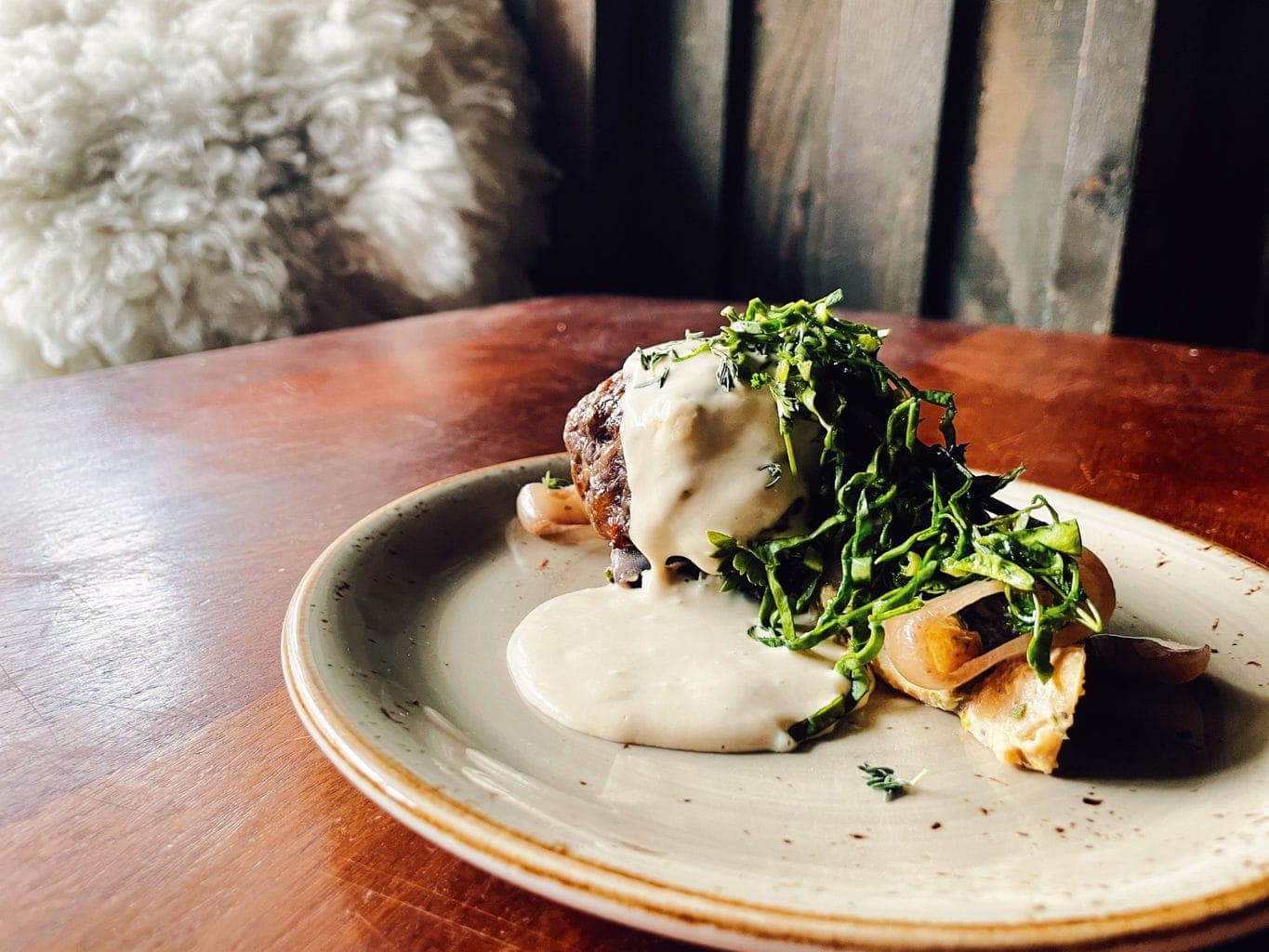
Roasted, fried, boiled, baked. Cold, and in a salad. Piping hot, mashed and infused with butter. Shredded. Diced. Pureed. Served whole. Is there anything a cook can’tdo with a potato?
Many view them as little more than reliable year-round culinary stalwarts —pleasantly starchy stuffing and filler, with little in the way of flavor. Variations in taste, they believe, revolve entirely around the style: Russet, Yukon Gold, etc.
But as farmers, we know potatoes in fact are highly seasonal. And exquisite when fresh.
“I put potatoes in the same category as sweet peas and sweet corn, as things that are best eaten at the peak of season,” says Eric. “Freshly dug from the garden, they are filled with complex aroma, beauty and flavor.”
And for Eric, potatoes are personal. His grandfather ran a hobby farm in Upstate New York, which Eric visited every summer while growing up. Two vegetables especially pleased his grandfather: peas and potatoes.
“I’ve never seen my grandfather smile so big as when the harvest came in and my grandmother would cook these simple things, and spread them out on the picnic table behind the house,” says Eric. “He prided himself on great fingerlings, and I’ve been chasing the dream for a long time.”

Like tomatoes, spuds are a New World food — in this case, a tuber — that the rest of the world fully embraced upon introduction. All of Europe goes nuts for potatoes. Ugandans incorporate them into curries. The people of Bombay spice them, roast them, and devour them like popcorn. In China’s Yunnan Province potato dishes run rampant, including a spicy mashed potato treatment called Grandma’s Potatoes.
You can’t miss potatoes anywhere in the New World, from Patagonia to the Yukon. And that includes Colorado — one of the potato-growing capitals of the United States, in fifth place behind Idaho, Washington, Wisconsin and North Dakota.
We contribute to Colorado’s potato bounty at Black Cat farm, with Adirondack Reds, Adirondack Blues, Austrian Crescents, German Butterballs, Kennebecs, Oneida Golds and French Fingerlings. Eric, the Superintendent of the Seed Catalogues, chooses our potatoes in the winter every year based on flavor and color. He wants a wide variety of colors, from both skins and flesh, on plates.
Growing potatoes — gotta’ be easy compared to temperamental tomatoes or fussy peppers, right? Smashingly wrong! When Black Cat Farm first started growing them, about a decade ago, “there were a lot of valiant attempts followed by spectacular failures,” says Eric. But potatoes now are dialed-in at Black Cat Farm. This year’s harvest is epic.
“I think even my grandfather would smile,” says Eric. “I’m feeling pretty proud about the potato harvest right now.”
Potato “seed” is really whole potatoes that are grown explicitly for planting. In the spring, the farm team cuts the potato “seed” into chunks, each of which ideally has at least two “eyes” or buds. The chunks are placed, eyes up, in trenches and then covered with soil. Once the above-ground plants are bushy, usually in mid-summer, we can start harvesting the potatoes, which remain under the soil. Harvesting happens straight through the growing season, all the way until first frost (or for as long as we have potatoes left to harvest). During the growing season, the potatoes get used in the restaurants and sold at the Market. Once the first frost hits, normally towards the end of the first week of October, the above-ground foliage dies, and Black Cat Farm harvests all of the potatoes and puts them in cold storage. The restaurants continue using them into April; they stand as a key part of the Black Cat way.
And speaking of the Black Cat way, our commitment to potatoes illustrates something important. Says Eric: “We believe in building farm-to-table from the bottom up, rather than just sprinkling down from top.”
Only a handful of restaurants in the United States approach Black Cat’s attachment to farm-to-table. Most might grow some herbs or edible flowers — and shower them over plates — and call it farm-to-table. But at Black Cat, even the potatoes, which normally get parked on the bottom of plates, are homegrown. And so is the lamb chop resting on the potatoes. And the bright roasted carrots. And the mustard flowers. And the incandescent green coulis.
Potatoes are mainstays at Black Cat, Bramble & Hare, and at our produce stand and prepared food stall at the Farmers’ Market. If you enjoy a meal at the restaurants, there is a good chance a potato will enter into a dish (look for it nesting comfortably on the bottom). And if you visit the Market, pick up some potatoes and start experimenting. Below, Eric offers a fantastic place to start.

Twice baked potatoes with smoked trout and arugula
This is a favorite dish of Eric’s to celebrate the beginning of the potato harvest. Fun, simple and addictively delicious. I serve this as a start to a casual dinner served on the patio near the grill. Smoked bacon or pork shoulder makes for a brilliant substitute for the trout.
Serves 4
1 pound fingerling potatoes
¼ cup aioli
1 filet smoked trout, skin and bones removed
1 scallion or spring onion, diced
1 hard-boiled egg, peeled and diced
1 pound of arugula, washed and dried
1 tablespoon olive oil
1 tablespoon sunflower oil
2 teaspoons red wine vinegar
Salt to taste
1. Pre-heat oven to 400 degrees.
2. In a small pot over high heat, boil the potatoes in salted water until tender, about 10 minutes.
3. Drain potatoes and cool until they are able to be handled. Cut potatoes into halves lengthwise. Using a small spoon, scoop some of the potato flesh from each half to form a divot or pocket, transferring the removed flesh to a medium mixing bowl. Reserve the potato flesh. Repeat until all of the potatoes are hollowed.
4. Add the trout to the reserved potato flesh, mashing up with a fork. Add aioli, egg and scallion, mixing well to combine.
5. Using a spoon, fill the potato halves with the trout mixture. Place the filled potatoes on a baking sheet and bake in the oven until hot and golden in color, about 10-12 minutes.
6. While the potatoes are cooking , in a large bowl, combine the arugula, oils and vinegar. Season to taste with salt. Toss gently to combine.
7. To serve, divide the arugula among 4 dinner plates. Divide the baked potato halves among the plates. Serve immediately.

At Black Cat This Week: Striped bass, confit potato, fennel, saffron roulle, pickled green garlic.

With lively acidity, stone-fruit flavor and forceful aromas, this Gruner Vetliner is classic.

At the Farmers’ Market this Saturday
Head to our prepared food stand for:
- World’s best breakfast sandwich
- Unrivaled pork burgers
- Sublime lamb gyros
- Swoon-worthy pork loin plate with baba ganoush, roasted turnips, broccoli and chimichurri
- Prepared salads
- Homemade lemonade
And at our produce stand:
- Lettuce varieties
- Arugula
- Tat Soi
- Purple tat soi
- Pak Choi
- Mizuna
- Chinese collards
- Purslane
- Hakurei turnips
- Radishes
- Broccoli
- Beets
- Carrots
- Onions
- Fennel
- Potatoes
- Squash blossoms
- Peppers
- Eggplants
- Wax Beans
- All Pork Cuts
